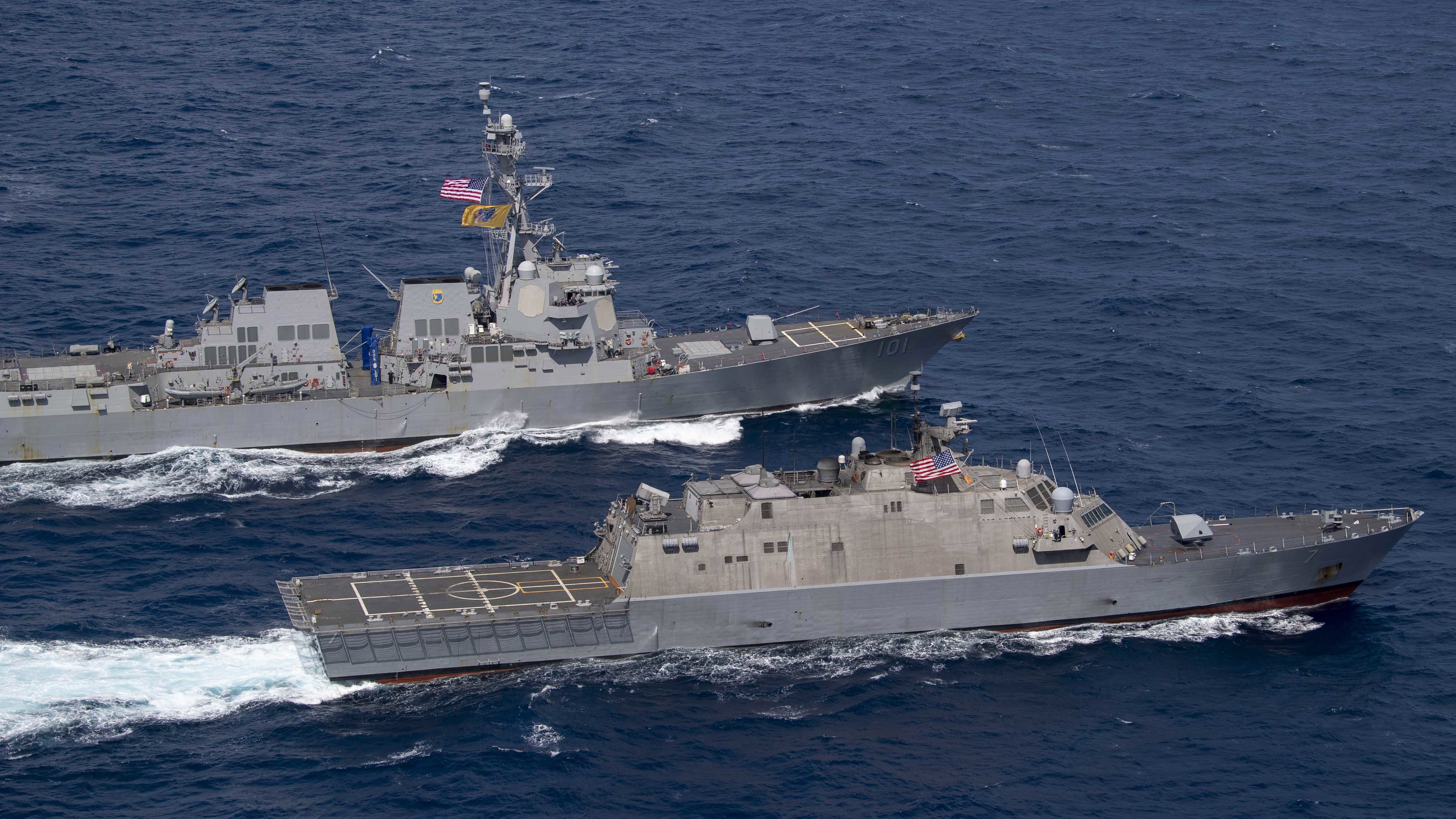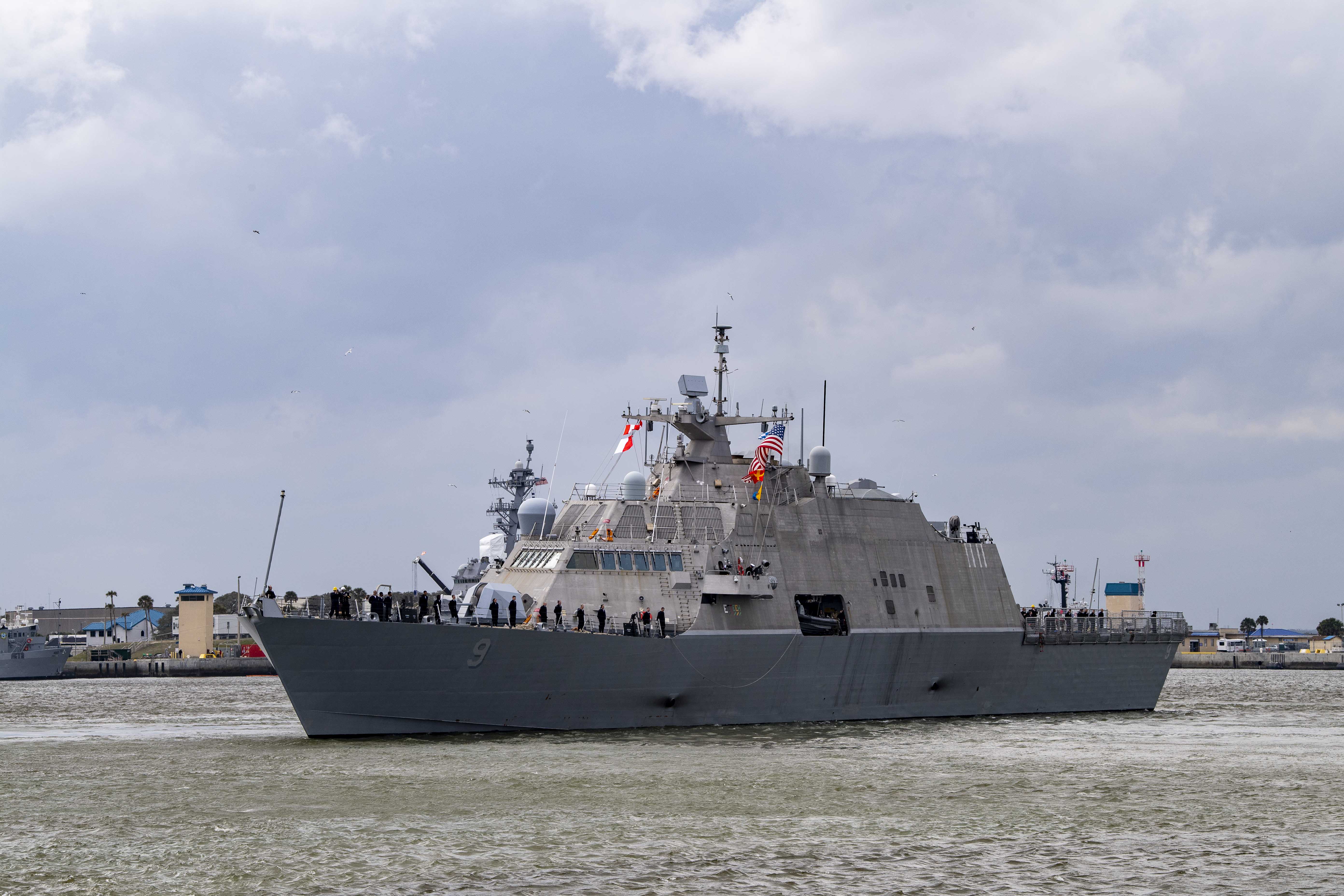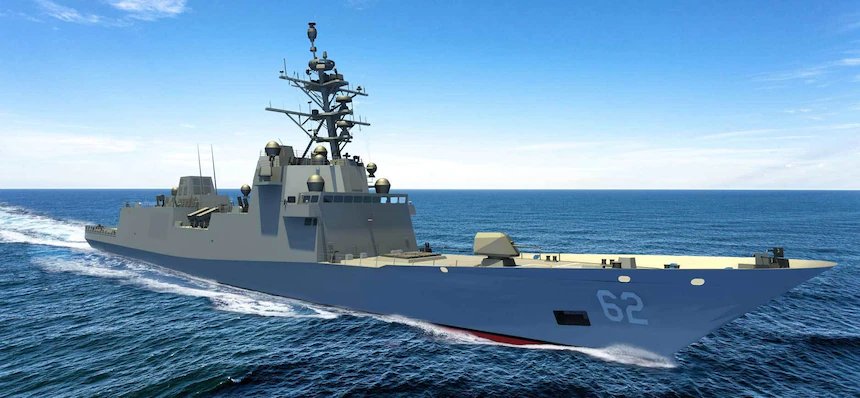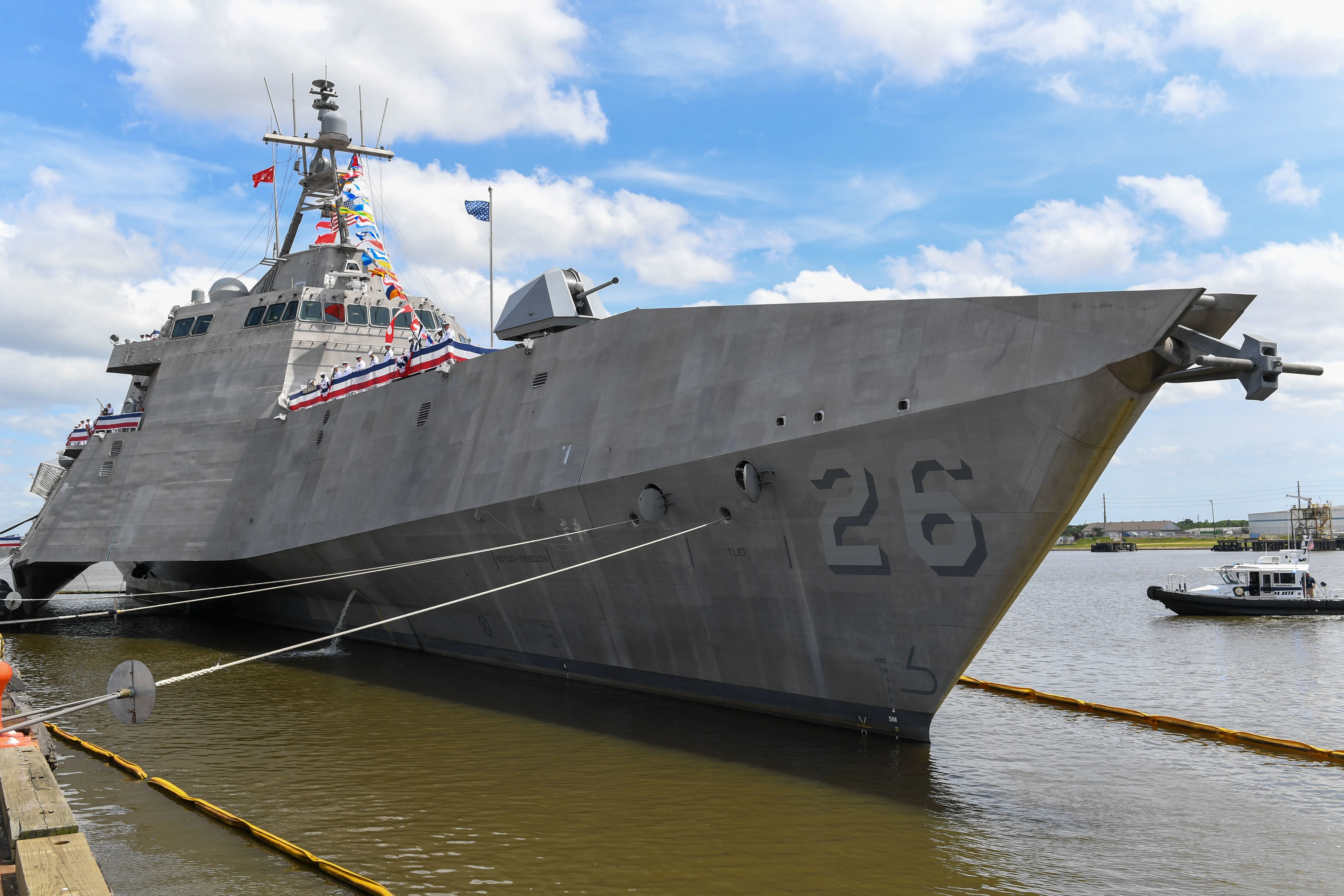The latest blow has been struck to the U.S. Navy’s troubled Littoral Combat Ship, or LCS, program, with the service’s announcement that it wants to get rid of another four of the warships by March 22 next year. This is in addition to the first two LCS ships that are already heading to a very early retirement. The Navy has put this proposed timeline on the deactivation of three Freedom class variants, USS Fort Worth (LCS-3), USS Detroit (LCS-7), and USS Little Rock (LCS-9), and one Independence class vessel, USS Coronado (LCS-4). The youngest of these — USS Little Rock — will only have been in service for a little over four years when it’s withdrawn.
The Navy’s latest plans for the LCS retirements were made public recently by the Chief of Naval Operations and brought to our attention by Navy veteran and former journalist David Larter. The official administrative notice, of NAVADMIN, details not only specific project dates for the planned decommissioning of these four LCS vessels, but also lays out a timeline for five surplus Cyclone class patrol boats to be sold off via the Foreign Military Sales program, among other things. It’s not clear which navy, or navies, have been identified as customers for the patrol boats.

As of now, 10 examples of the Freedom class ships have been delivered, with another five under construction or in the process of fitting out, and one more example on order. Thirteen Independence class warships have also been commissioned, the most recent in May this year, with another two fitting out, three under construction, and one on order.
Although the final fate of the four LCSs will depend on a Congressional decision, it’s abundantly clear that the Navy wants to do away with the warships. This plan to decommission these four ships first emerged in the Navy’s latest budget request for Fiscal Year 2022. The plan is for these four ships to be placed in what is called “Out of Commission, In Reserve,” which would leave the potential, however remote, that they could be reactivated, if necessary.
The service’s proposed budget for Fiscal Year 2021 had also tried to retire the first examples, each, of the Freedom and Independence class LCSs, to save money. Notably, these four vessels were not completed to the same standard as subsequent examples in either subclass, and the cost to update them and make them combat-ready is significant — around $2.5 billion, in total, according to Navy officials.
Congress last year approved the retirement of the first two ships in each subclass, USS Freedom (LCS-1) and USS Independence (LCS-2), which will be decommissioned this year. However, legislators blocked the Navy from getting rid of the next two ships, Fort Worth and Coronado.
The Navy is now trying again to retire LCS-3 and LCS-4, pointing to the high costs associated with upgrading them to a common configuration in line with other more recent LCSs. These two warships also lack the controversial mission modules, which were originally designed to be switched in and out of the hulls rapidly while in port, before this idea was abandoned, leaving each ship with a single module installed. In the meantime, the Navy is still waiting for its anti-submarine warfare and mine countermeasures modules, leaving only the anti-surface warfare version available on some of the hulls.
In addition, the service is now looking to decommission USS Detroit and USS Little Rock. These are both Freedom class ships and were only commissioned in 2016 and 2017, respectively.
Unfortunately, they have also had some of the worst of problems with their propulsion systems, specifically the combining gear, which links the two main diesel engines on the Freedom class design to a pair of gas turbines, which can provide additional power for its water jet propulsion system. As such, the combining gear is a critical part of these vessels’ ability to reach speeds of over 40 knots, which was a core requirement when the ships were under development.
The Pentagon specifically identified the combining gear in LCS-7 and LCS-9 as the reason to decommission of these warships earlier than planned, its Defense Budget Overview for Fiscal Year 2022 describing “major propulsion train casualties” on both these Freedom class ships.

The Pentagon has concluded that fixing the Freedom class ships would be too costly and that retiring them would save $186 million that could better be invested elsewhere. “Decommissioning these two ships includes a cost avoidance strategy, so that scarce maintenance funding can be allocated to the highest priority ships,” the Pentagon continues.
The Navy also argues that its future FFG-62 Constellation class frigates will be able to provide equivalent, if not vastly improved capabilities over the four LCSs now slated for decommissioning. These new warships are shaping up to be very capable for their size, but the first of them is only due to enter service in the late 2020s.

Nevertheless, despite the decision to build an entirely new class of more capable frigates, the Navy otherwise seems to be sticking to its LCSs, despite their shortcomings, and is still building LCSs in the meantime, too. With that in mind, additional — and hopefully more reliable — LCSs would help bridge the gap until the new warships arrive.
The process of actually providing new LCSs to the fleet is not without problems, however. Last January, with 10 examples of the Freedom class commissioned, the Navy called for a pause in deliveries, again attributed to problems with the drive train. At the same time, the ships that have been delivered are proving alarmingly expensive to operate, especially when compared to the limited capabilities they currently offer. It emerged earlier this year that the cost of operating the vessels is far higher than planned, comparing unfavorably even to the much more capable Arleigh Burke class guided-missile destroyer.

Amid the catalog of problems that’s afflicted the LCSs, the Navy has not deployed Independence in an operational capacity, while Freedom, Fort Worth, and Coronado have each deployed once. The deployments for those last two warships were also interrupted by technical problems. More recently, the Navy has announced plans to have six LCSs deployed on operations before the end of this year, which would be a new record for the ships.
As for the future, and the remaining LCSs, the Navy is hopeful that the addition of the Naval Strike Missile, or NSM, on all these hulls will provide a new relevance for littoral operations. Meanwhile, thought is also being given to whether the LCSs can also be used for the Expeditionary Advanced Base Operations (EABO) concept, currently being developed by the Navy and Marine Corps. In that scenario, the LCS would be used as something like a fast troop transport, moving small numbers of infantry around as part of an Indo-Pacific region island-hopping-type campaign.

Losing another four LCSs, however problematic they have proven to be so far, further dents the Navy’s aspiration to reach a total fleet size of 355 ships. These warships were each originally expected to serve for around 25 years. On the other hand, they have spent very little time on operational deployments, so deleting them is unlikely to make a significant difference in terms of overall maritime capability.
While it remains to be seen whether Congress will be convinced by the Navy’s and Pentagon’s arguments to do away with another four LCSs, the latest development is another indictment of the concept in general, and of the Freedom class specifically.
Contact the author: thomas@thedrive.com
